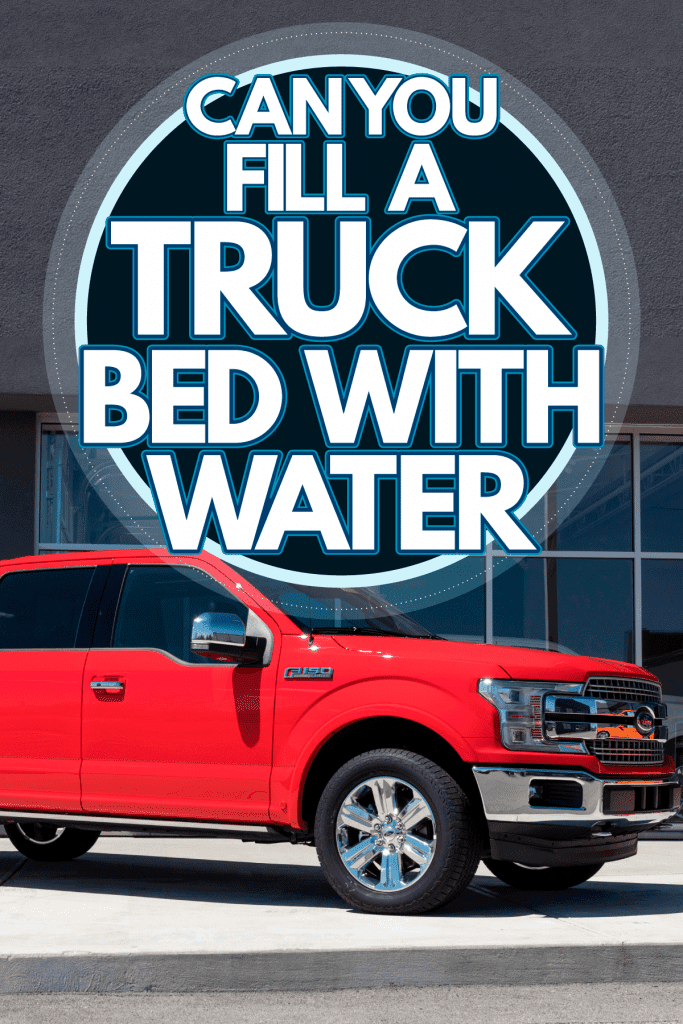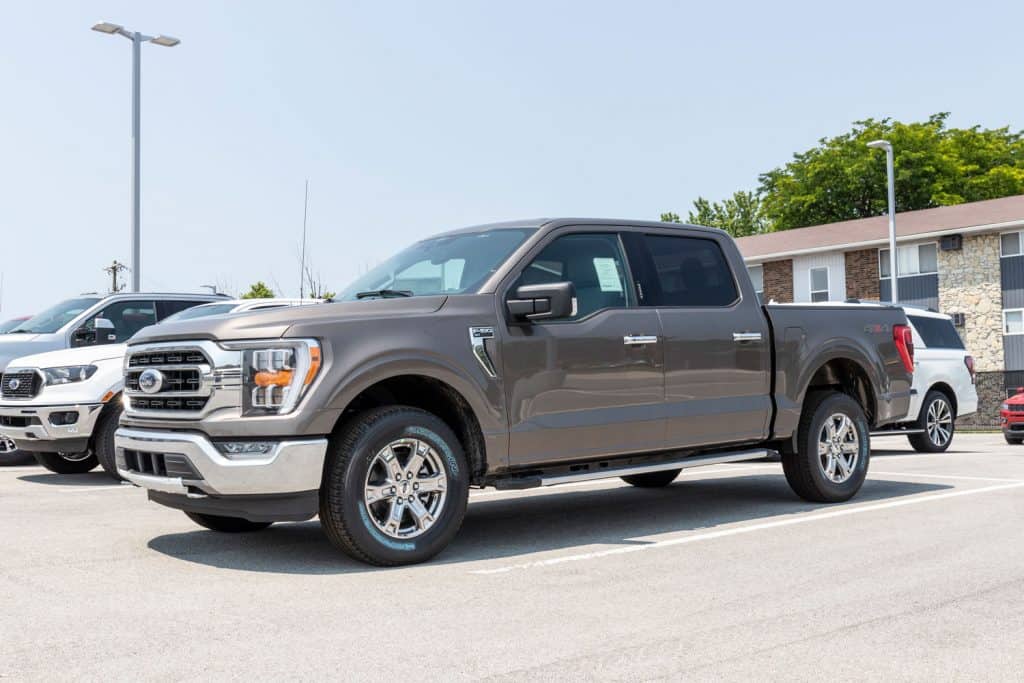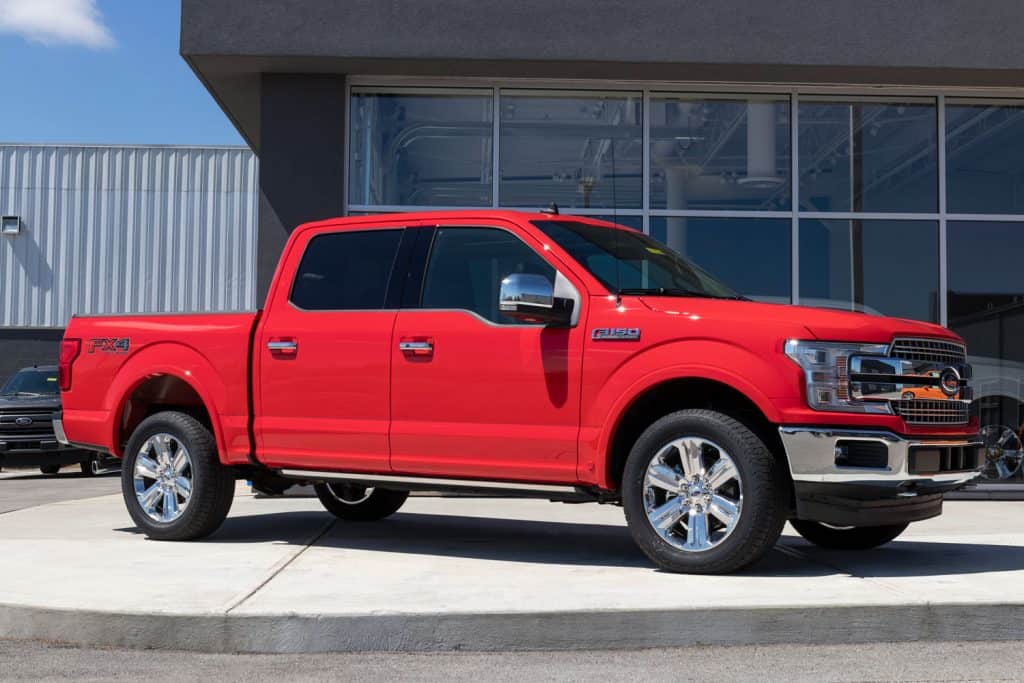The truck bed swimming pool is the first thing that comes to mind when you think of filling it with water. However, making one of these backyard inventions, as seen on reality TV and online memes, isn't as easy as it seems. We've conducted in-depth research and collected information to give you a precise solution to this quandary.
Your truck's condition, make, and model will determine whether you can fill the bed with water. Due to the water weight of 62.4 lbs per cubic foot, even filling a truck bed halfway can easily exceed your truck's suspension capacity. So, before you fill up your truck's bed with water, check your vehicle's maximum payload specifications.
After checking your truck's specs, you can then estimate how much water it can hold and create a conclusion if your truck bed is suitable for a mini pool. Continue reading as we will discuss how you can do it. We'll also provide you with the brands and models that can carry the weights, some reasons why it is terrible to make a pool in your truck bed, and more.

What Is a Truck Bed Pool?
A truck bed pool is just as it sounds. Owners of pickup trucks line the bed with a tarp and fill it with water from a yard hose. With friends and excellent music, this should be a fast and straightforward way to have a party.
It makes sense logically, and many have tried it in recent years. Truck bed swimming pools have grown popular, even on TV. In this case, a fantastic notion is unfortunately too good to be true.
How Much Water Can I Put In the Bed of My Truck?

To make a pool in your truck bed, first, calculate how much water it can hold. Water is quite dense (62.4 pounds per cubic foot), and most truck beds usually have 30 to 80 cubic feet of freight. If you do the math, it will be 2,496 pounds or 299 gallons (half-filled) of water needed to fill an 80-cubic-foot load.
To estimate how many gallons of water your truck can hold, you can use this calculator to convert pounds to gallons.
Can You Make a Pool in Your Truck Bed?
No matter how strong the truck, most aren't intended to support that much weight in the bed. Filling just half the bed with water usually doesn't work. DualLiner tested 24 trucks, finding that 67% couldn't manage half a bed full of water, and 96% couldn't take a full bed of water.
Though a truck bed pool appears ideal, manufacturers don't construct trucks to hold water. Truck beds include draining holes to protect the suspension from heavy rain.
How Much Weight Is a Truck Bed Pool?
Water is substantially denser than a stack of redwood (28 pounds per cubic foot) or even crushed asphalt (45 pounds per cubic foot). The total weight of your liquid freight in an 80 cubic-foot bed pickup truck is about 4,992 pounds.
How Much Can a Truck Bed Hold?
How much a truck bed can hold depends on the maximum payload capacity of your vehicle. To give you an example, the maximum payload capacity of a 2014 Chevy Silverado is 2,059 pounds with a cargo bed of 76.3 cubic feet. It means a full bed of water will easily exceed your truck's maximum payload. A half-full bed of water (2,368 pounds) easily exceeds its carrying limit.
What Trucks Are Capable of Carrying The Weight?

If 96% of the trucks in this test could withstand a full bed of water, that implies two vehicles could sustain a truck bed pool, and these are the 2014 Ford F-450 and the 2014 Ram 3500HD Dually. Recent cars can also manage a pool, weight-wise; according to Ford, the 2022 Super Duty F-350 Lariat can tow 6,960 pounds.
Before you rush out to acquire one of these vehicles, keep in mind that they may cost upwards of $60,000. According to HomeAdvisor, the average cost of an inground pool is $51,817, significantly less than some of these vehicles.
If you want to buy a truck to use as a pool, it could be cheaper to build an inground pool instead! If you already possess a pickup with the payload to manage a truck bed pool, there's no reason not to use it. Just monitor your truck's suspension.
How to Make a Truck Bed Pool?
If you have trucks with good maximum payload capacity specifications or its suspension can lift a heavyweight, and you want to make a bed pool, here's the guide you can follow for a pickup pool:
Tools Needed
Here are the tools required in making your DIY truck bed pool:
- Brackets
- Bolts and nuts
- Gloves
- Measuring tape
- Goggles
- Plastic stripes and bags
- Plastic tape
- Vinyl sheets
- Scissors
Plastic Bags as Truck Liners
Pick a protective layer after preparing the tools needed, and plastic bags are the best choice. To do this, use broad plastic bags; they should be thick and durable.
Measure the plastic bag's length and width to slice it. A pickup needs a cut portion of 12-13 gallons.
Place the cut bag on the bed, aligning the edges. Apply adequate glue to align the plastic bag with the walls and bed. Allow the glue to cure for a while after applying it. You may also use this procedure on a hybrid pickup.
Use Elastic Vinyl Bags as Truck bed Liners
Using thin vinyl flexible liners to replace plastic bags is easy to install by pulling apart.
The standard sizes are 6 feet for light trucks and 7 feet for large vehicles. These liners can be removed quickly and do not harm paint. The bags featured below also feature a helpful valve to drain all the water swiftly.
Click here to see this on Amazon.
Inflatable Truck Pool
Featured below is the most popular truck pool you can buy, and it omes in various brands and characteristics. It is 66 inches long, 62 inches wide, and 21 inches high. It has two air chambers that you can fill and expand when inflated to become a large piece of equipment.
It is composed of thick material that is sturdy and does not harm the paint. This substance can keep it intact in its current location. It has a longevity of between five and six years.
Click here to see this on Amazon.
Fill it With Water
You may fill it with water from a garden hose. You may also use filtered water for taking your kids swimming. Filling the bed takes a long time since it takes around one ton of water.
Increasing the height of liners may also provide depth. It is not an easy task, but you can accomplish it if you want to be experimental. Fill it after parking at the specified place. You can't fill it and drive on the street. It's against the law in many areas.
Always remove water from the pool after use and check for leaks during use. Leaky liners or lingering water might rust the truck bed.
Seal it With Brackets & Fasten
After filling the pool with water, you must secure the liners and the inflatable pool, which holds gallons of water. Seal it with a perfect supporting bracket.
Supporting brackets are available in metal, wood, and plastic. These brackets hold it in place and do not keep water out.
After sealing it with brackets, you can use nuts and bolts to fasten it. They set it well, and last during use. It is the cheapest option locally. The downside is that bolts may puncture the liner.
Adding Plastic Strips
Adding plastic strips is the most convenient method to accomplish it. Plastic strips have one side sticky to cling to any surface. These safeguard the inner components and increase the equipment's life.
Apply the adhesive coating to the inside to secure it. Non-adhesive strips and some sticky material are available. These strips are cheaper than comparable items and function better in many circumstances.
Click here to see this Silicone Seal Strip on Amazon.
If you like an actual demonstration of making a DIY truck bed swimming pool, you can watch the video below.
Remember: Due to the weight, the suspension might fracture easily. Persistent wetness in the paint might cause it to fade or exposed areas to rust. Water in the engine may contaminate the gasoline and restrict engine speed so manage your construction and use of a truck bed pool carefully.
Is It Bad To Make a Pool in the Bed of a Truck?
Overloading your truck's bed might potentially harm the suspension system. Leaf springs may crack, shocks can rupture, and tie rods can bow due to water weight. In summary, a day of fun may cost thousands of dollars in suspension repairs. If you drive your truck with wet cargo, you risk damaging the back axle and tires.
A non-luxury vehicle's suspension may cost up to $5,000, according to Costhelper, including replacing the shock absorbers for $1,500 and the joints for $350 each. Your suspension may be compromised if your vehicle drifts and jiggles excessively.
Final Thoughts

If you want to fill your truck bed with water like a pool, it is essential to emphasize that most manufacturers did not design truck beds for that purpose. It may destruct your truck and give stress to you by spending on repairs in the long run.
We hope you found this post interesting. If you want to expand your knowledge about truck beds, you may consider reading these articles:



